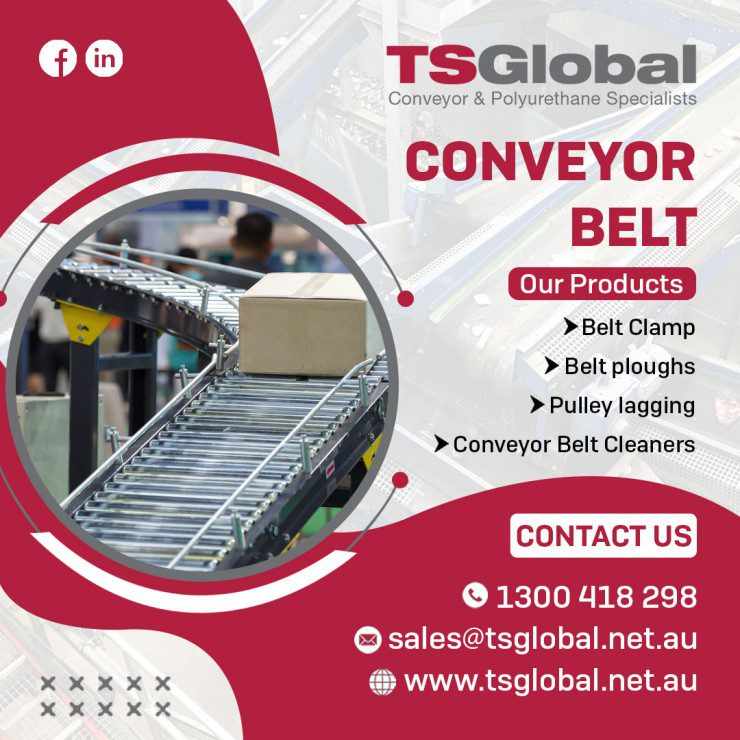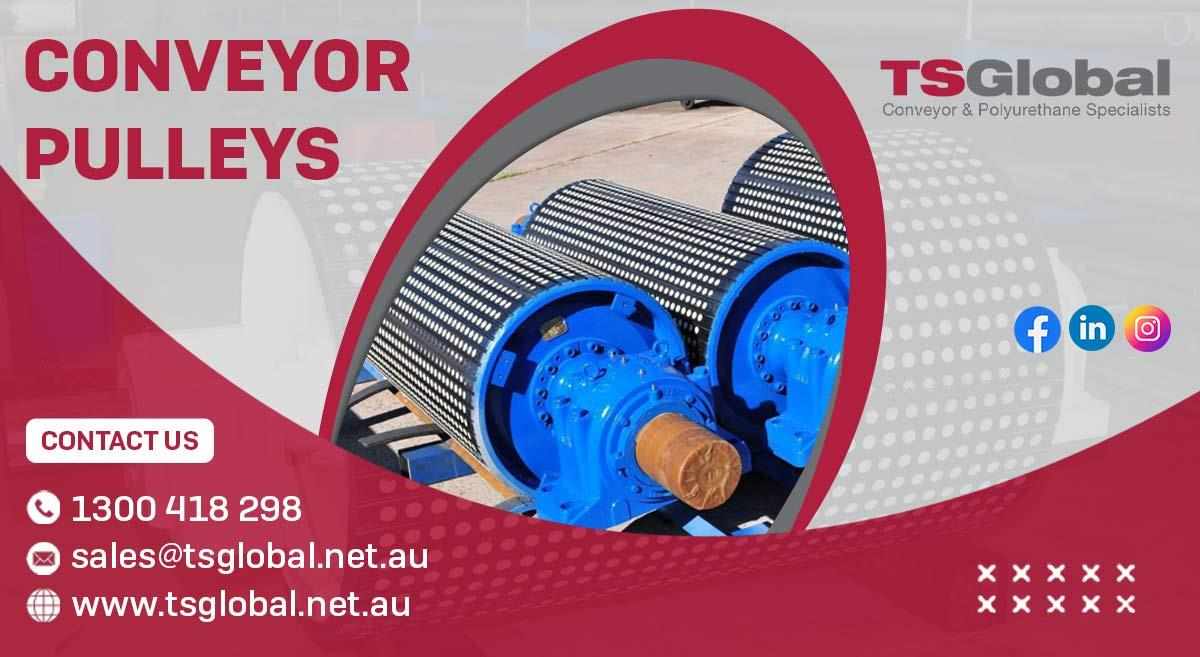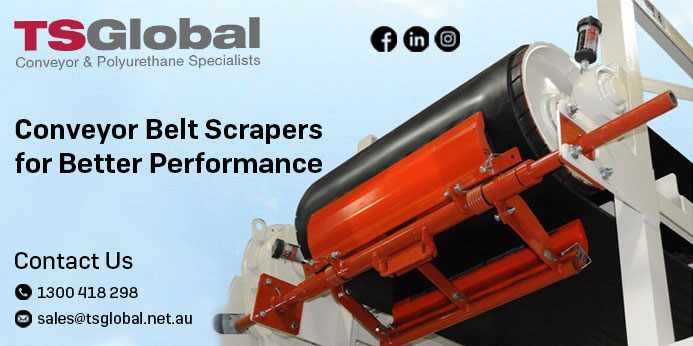
Conveyor belts are essential components in modern industrial and commercial settings. From moving products in a warehouse to facilitating the mining of raw materials, conveyor belts play a crucial role in ensuring efficiency, productivity, and safety in various sectors. But how exactly do conveyor belts work? In this comprehensive guide, we will delve into the components, mechanics, and applications of conveyor belts, as well as their benefits and advancements in technology.
What is a Conveyor Belt?
A conveyor belt is a continuous loop of material, typically made from rubber, fabric, or metal, that is driven by one or more pulleys. The belt moves in a circular motion, carrying items from one point to another. Conveyor Belt Cleaner can be flat, inclined, or curved, depending on the system’s design and the requirements of the operation. They are used to transport various materials, from small items like screws and bolts to heavy loads like coal or gravel.
Key Components of a Conveyor Belt System
To understand how a conveyor belt works, it’s important to know the main components of the system. These include:
Belt: The belt itself is the most recognizable component of the system. It is typically made from layers of material such as rubber, polyester, or steel mesh. Depending on the application, the belt can be heat-resistant, anti-static, or oil-resistant.
Pulleys: Pulleys are essential for driving and guiding the conveyor belt. There are two primary pulleys in a conveyor system: the drive pulley and the tail pulley. The drive pulley is responsible for moving the belt, while the tail pulley maintains tension and keeps the belt aligned.
Motor: The motor powers the drive pulley, which, in turn, moves the belt. Motors can vary in size and type, depending on the required speed and load capacity.
Rollers: Rollers, placed along the length of the conveyor, support the belt and help reduce friction. They also ensure the belt stays in place during operation.
Idlers: Idlers are additional rollers that help maintain belt tension and alignment. These can be placed along the length of the belt to provide extra support.
Frame: The frame is the structure that supports all of the components, keeping the belt, pulleys, and rollers in position.
Drive Unit: The drive unit is a combination of the motor and the gearbox, which together power the drive pulley to move the belt.
How Does a Conveyor Belt Work?
The operation of a conveyor belt is straightforward yet highly effective. Here’s a step-by-step breakdown of how it works:
Powering the Belt: The system starts with the motor, which powers the drive pulley. The motor can be controlled manually or automatically using sensors or timers, depending on the design of the conveyor system.
Movement of the Belt: As the motor turns the drive pulley, friction between the pulley and the belt causes the belt to move. The belt moves in a continuous loop, driven by the rotation of the pulley.
Transporting Materials: As the belt moves, it carries materials placed on its surface from one location to another. Whether it’s transporting small items in a factory or moving heavy loads in a quarry, the conveyor belt ensures smooth and consistent transportation.
Guiding and Supporting the Belt: Rollers and idlers, placed strategically along the conveyor’s length, support the belt and keep it aligned. The tail pulley maintains tension, ensuring the belt doesn’t sag or slip off the rollers.
Unloading the Materials: Once the materials reach the end of the conveyor belt, they are either unloaded manually or dropped into a chute or bin, depending on the design of the system.
Types of Conveyor Belts
There are several types of conveyor belts designed for specific industries and applications. Some of the most common types include:
Flat Belt Conveyors: These are the most common type, used in manufacturing and distribution centers for moving products along assembly lines or in packaging operations.
Modular Belt Conveyors: Made from interlocking pieces, these belts are flexible and can handle turns, inclines, and declines, making them ideal for food processing and packaging.
Cleated Belt Conveyors: These have vertical cleats attached to the surface of the belt, allowing them to transport materials up inclines without slipping.
Incline/Decline Belt Conveyors: These conveyors are designed to move materials up or down a slope, perfect for moving products between different levels in a warehouse or factory.
Roller Bed Conveyors: These use a series of rollers placed along the length of the belt, making them ideal for moving heavy loads with reduced friction.
Magnetic Belt Conveyors: Equipped with magnets, these conveyors are used to move magnetic materials such as metal scraps or steel products.
Advantages of Conveyor Belts
Conveyor belts offer numerous benefits to industries across the board:
Increased Efficiency: Conveyor belts allow for the continuous transportation of materials without the need for manual labor, speeding up production times and increasing overall efficiency.
Reduced Labor Costs: By automating the movement of goods, conveyor belts reduce the need for workers to carry or transport materials, lowering labor costs and minimizing the risk of injury.
Versatility: Conveyor belts can be used to move a wide variety of materials, from small parts to large loads, making them highly adaptable for different industries and applications.
Customizable: Conveyor belt systems can be customized to meet the specific needs of a business, from adjusting the belt speed to designing the system to accommodate various layouts and production lines.
Increased Safety: Conveyor belts help minimize the risk of injury in the workplace by automating the transportation of heavy or dangerous materials, reducing the need for manual handling.
Applications of Conveyor Belts
Conveyor belts are used in various industries for a wide range of applications, including:
Manufacturing: Conveyor belts are used in production lines to move raw materials and finished products through various stages of assembly.
Mining and Quarrying: In these industries, conveyor belts transport large quantities of materials like coal, ore, and gravel from extraction points to processing areas.
Warehousing and Distribution: Conveyor belts are vital for moving products through sorting, packaging, and shipping processes in warehouses and distribution centers.
Food Processing: Conveyor belts help transport food products through different stages of preparation, cooking, and packaging, ensuring hygiene and efficiency.
Airports: Luggage handling systems rely on conveyor belts to move baggage efficiently through check-in, security, and baggage claim.
Conclusion
Conveyor belt are indispensable in today’s industrial and commercial settings, offering a streamlined and efficient way to transport materials. Their versatility, coupled with advancements in technology, has made them an essential tool across various industries. Whether in manufacturing, mining, food processing, or warehousing, understanding how conveyor belts work and their components is key to optimizing operations and achieving business success.

















.jpeg)


Write a comment ...